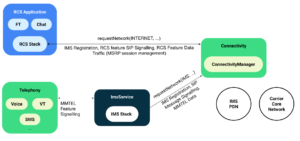SSDI, or the Social Security Death Index, is a repository of death records for Social Security beneficiaries. They include all deaths reported to the Social Security Administration starting in 1962. They are also integrated with state death records and other family history research resources.
It Includes All Deaths Reported to the Social Security Administration Beginning in 1962
A Social Security death index (SMDI) file includes all deaths reported to the Social Security Administration (SSA) starting in 1962. It is not an exhaustive list of all deaths, but it does provide helpful information. The information includes full name, birth, death dates, the state where the number was issued, and last known address. Some records also include Social Security numbers, which can help trace family members.
The Social Security Death Index is a vast database containing vital information about over 64 million people. It includes details about the deceased, survivors, and beneficiaries. The data is updated frequently, and the database is not limited to recent years. As such, it is not necessary to be related to the deceased to search for a deceased person’s name in the Social Security Death Index. You need to know essential information about the deceased to guide your search.
Before searching for ancestors, you must know how to search for social security death index records. You will need the person’s full name, birth date, and the state where they last resided. Generally, it is best to search by name first, then add the condition they were born in and last lived in. Once you have found the ancestor, you can narrow the search using birth date and state of birth.
It is Integrated With Other Online Collections And Family History Research Tools
The social security death index contains records of deaths in the United States and is integrated with other online collections and family history research resources. It is a powerful data source because it can reveal details about your ancestors’ lives and family history. The records are often integrated with newspaper archives to help you research your family history.
The Social Security Death Index is a database created from the Death Master File Extract (DMF) of the United States Social Security Administration. Thousands of people with social security numbers are recorded each year. It is vital to the United States genealogy and family history research process.
Since 1936, the Social Security Administration has maintained over 85 million death records. Death reports are submitted to the SSA by many sources, including family members, funeral homes, financial institutions, postal authorities, and state information. The SSA death index records are stored on a database called NUMIDENT, short for numerical identification. It includes SSN records for every citizen.
It is Limited in Scope
Social security death index records are not an exhaustive list of the deceased. The National Technical Information Service explains that the death index is limited to records reported to the Social Security Administration since 1936. The database was created to help verify deceased individuals and protect beneficiaries to prevent identity fraud.
The SSA is required by federal law to conduct risk assessments before accepting death reports. These assessments help to identify inaccuracies in the data. Errors in data can lead to errors in payments to deceased beneficiaries. The agency does not verify all death reports; it only verifies reports submitted by Social Security beneficiaries and those from less reliable sources. Nevertheless, the GAO identified instances where SSA procedures caused inaccurate data. Some of these instances were caused by errors that could have been prevented had the agency verified death reports.
Since the SSDI is updated reasonably frequently, it is unlikely to include records more than seven years after death. Hence, future studies may better look at shorter periods between death and search.
It is Integrated With State Death Records
While the Social Security Administration provides a comprehensive index of death records, it cannot guarantee that all deceased persons’ information is accurate. The database draws from multiple sources, including financial institutions, state agencies, postal authorities, decedents’ families, healthcare organizations, and funeral homes. As a result, you should never assume that a deceased person is still alive just because the Death Master File says so. The purpose of the database is to prevent fraud, mainly involving employment opportunities and financial deception.
The Death Master File contains over 85 million death reports submitted to the Social Security Administration. This information comes from several sources, including state and local death records, family members, and financial institutions. The data is stored in the Death Master File, a searchable database. This file includes information from all deaths reported to the SSDI since 1936.
You can search the SSDI database by entering the deceased’s full name, middle initial, and last name. Then, you can refine your search by adding the ancestor’s Zip code, birth date, and death date. This data helps trace family history and locate deceased relatives.






More Stories
SCPM Client vs. Traditional Methods: Revolutionizing Supply Chain Performance
Is Companion Device Manager Spyware? 10 Shocking Truths Revealed
SASE – The Key to Secure Digital Transformation